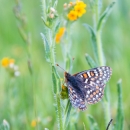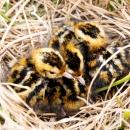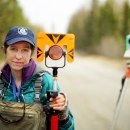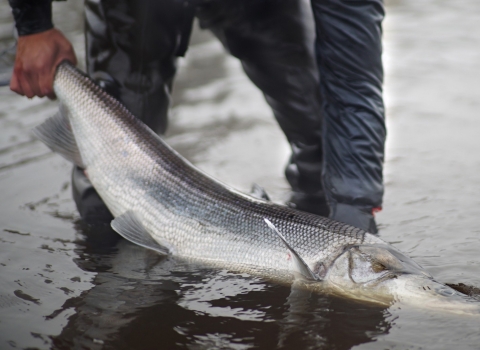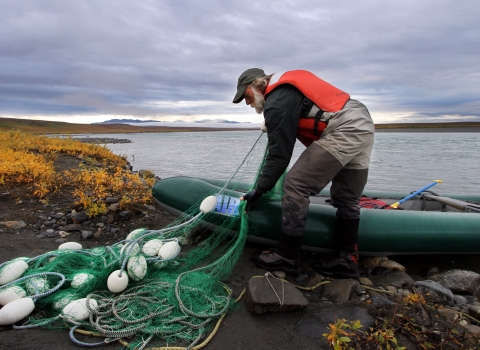What We Do
Our Ecological Services Branch is responsible for recovery of three species listed as Threatened under the Endangered Species Act: Steller’s eiders, spectacled eiders, and polar bears. Additionally, the Eskimo curlew is listed as endangered, but there have been no confirmed sightings since the mid 1960's. Much of what we do involving conservation planning and environmental contaminants revolves around these species. Recovery activities include conducting field investigations, consulting with developers to minimize threats to wildlife and their habitats, and providing the public with information on the protection of endangered species.
Staff in our Fisheries and Habitat Branches gather critical information about the lives and habitats of Alaska's native fish on and off National Wildlife Refuge System lands. This information is used to ensure that a connected network of lands and waters in Alaska support diverse, self-sustaining populations of wild, native fish with all their natural variability in abundance, genetics, and life history strategies. We work alongside others to not only maintain healthy fish populations, but also provide subsistence harvest opportunities. We work together with landowners and partners to restore and conserve fish habitat, and detect/eradicate/control invasive species invasive species
An invasive species is any plant or animal that has spread or been introduced into a new area where they are, or could, cause harm to the environment, economy, or human, animal, or plant health. Their unwelcome presence can destroy ecosystems and cost millions of dollars.
Learn more about invasive species .
Our Projects and Research
In the spring of 2004, thawing permafrost caused a large landslide (slump) in the upper Selawik River within Alaska's Selawik National Wildlife Refuge. As the slump grew it discharged tons of sediment upstream of the Selawik sheefish population's spawning grounds. This fish is an important Refuge fixture and year-round subsistence food for the Inupiat people living in the Selawik/Kotzebue...
When woolly mammoths still roamed Earth, rain and snow fell on the south side of Alaska’s Brooks Range. Those same ancient waters are just now entering frozen rivers on Alaska’s North Slope via perennial springs. And they hold the key to survival for salmon-sized Dolly Varden and several other species of fish in Arctic National Wildlife Refuge.
Read more about Alaska's North Slope...
This multi-year project has sought to reconnect habitat and restore fish passage in Fairbanks, Alaska.
Cripple Creek’s natural channel was abandoned in 1935 when streamflow was diverted into an artificial drain constructed to carry wastewater and sediment from hydraulic mining activity in the Ester area. Though mining activity ceased years ago, the drain channel...
The Federal Subsistence Board has given Delegated Authority to the Federal Inseason Fishery manager to manage subsistence fishing for salmon in all Federal Public waters of the Yukon Area.
The Federal manager and a team of assessment and management biologists work together with State of Alaska managers, Office of Subsistence Management staff, Regional Advisory Councils, USFWS Refuge...

